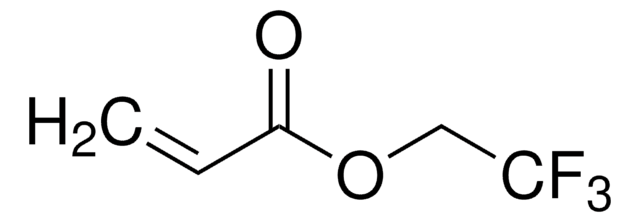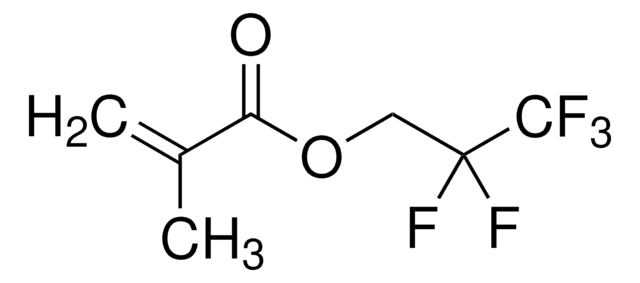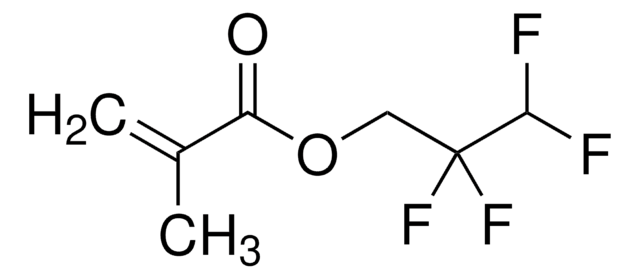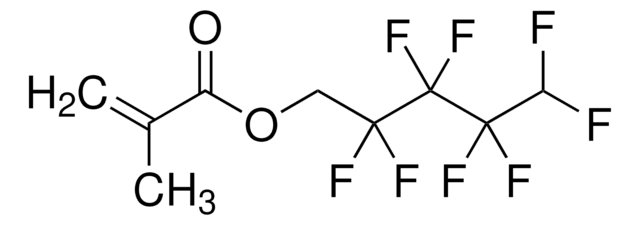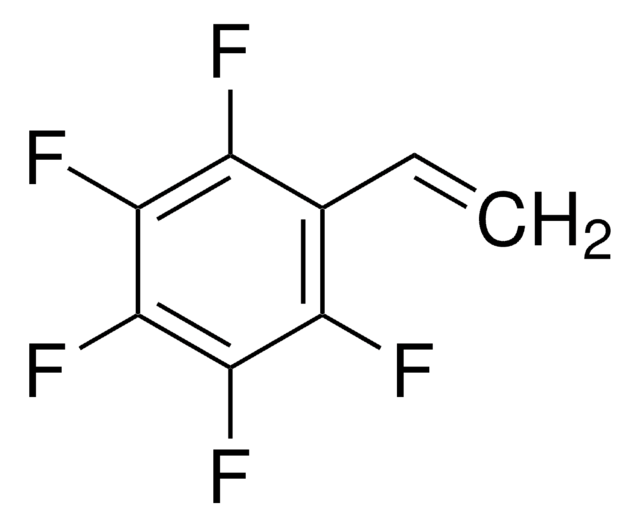373761
2,2,2-Trifluoroethyl methacrylate
contains 50-200 ppm MEHQ as inhibitor, 99%
Synonim(y):
2,2,2-Trifluoroethyl 2-methylprop-2-enoate
About This Item
Polecane produkty
Próba
99%
Postać
liquid
zawiera
50-200 ppm MEHQ as inhibitor
współczynnik refrakcji
n20/D 1.361 (lit.)
tw
59 °C/100 mmHg (lit.)
gęstość
1.181 g/mL at 25 °C (lit.)
temp. przechowywania
2-8°C
ciąg SMILES
CC(=C)C(=O)OCC(F)(F)F
InChI
1S/C6H7F3O2/c1-4(2)5(10)11-3-6(7,8)9/h1,3H2,2H3
Klucz InChI
QTKPMCIBUROOGY-UHFFFAOYSA-N
Opis ogólny
Zastosowanie
Hasło ostrzegawcze
Danger
Zwroty wskazujące rodzaj zagrożenia
Zwroty wskazujące środki ostrożności
Klasyfikacja zagrożeń
Acute Tox. 3 Inhalation - Acute Tox. 3 Oral - Aquatic Chronic 3 - Flam. Liq. 2
Kod klasy składowania
3 - Flammable liquids
Klasa zagrożenia wodnego (WGK)
WGK 2
Temperatura zapłonu (°F)
62.6 °F - closed cup
Temperatura zapłonu (°C)
17 °C - closed cup
Środki ochrony indywidualnej
Eyeshields, Faceshields, Gloves, type ABEK (EN14387) respirator filter
Certyfikaty analizy (CoA)
Poszukaj Certyfikaty analizy (CoA), wpisując numer partii/serii produktów. Numery serii i partii można znaleźć na etykiecie produktu po słowach „seria” lub „partia”.
Masz już ten produkt?
Dokumenty związane z niedawno zakupionymi produktami zostały zamieszczone w Bibliotece dokumentów.
Klienci oglądali również te produkty
Produkty
Polymeric materials, with unique refractive index properties, find applications in photonics and optical coatings for various devices.
Materiały polimerowe o unikalnych właściwościach współczynnika załamania światła znajdują zastosowanie w fotonice i powłokach optycznych do różnych urządzeń.
Nasz zespół naukowców ma doświadczenie we wszystkich obszarach badań, w tym w naukach przyrodniczych, materiałoznawstwie, syntezie chemicznej, chromatografii, analityce i wielu innych dziedzinach.
Skontaktuj się z zespołem ds. pomocy technicznej